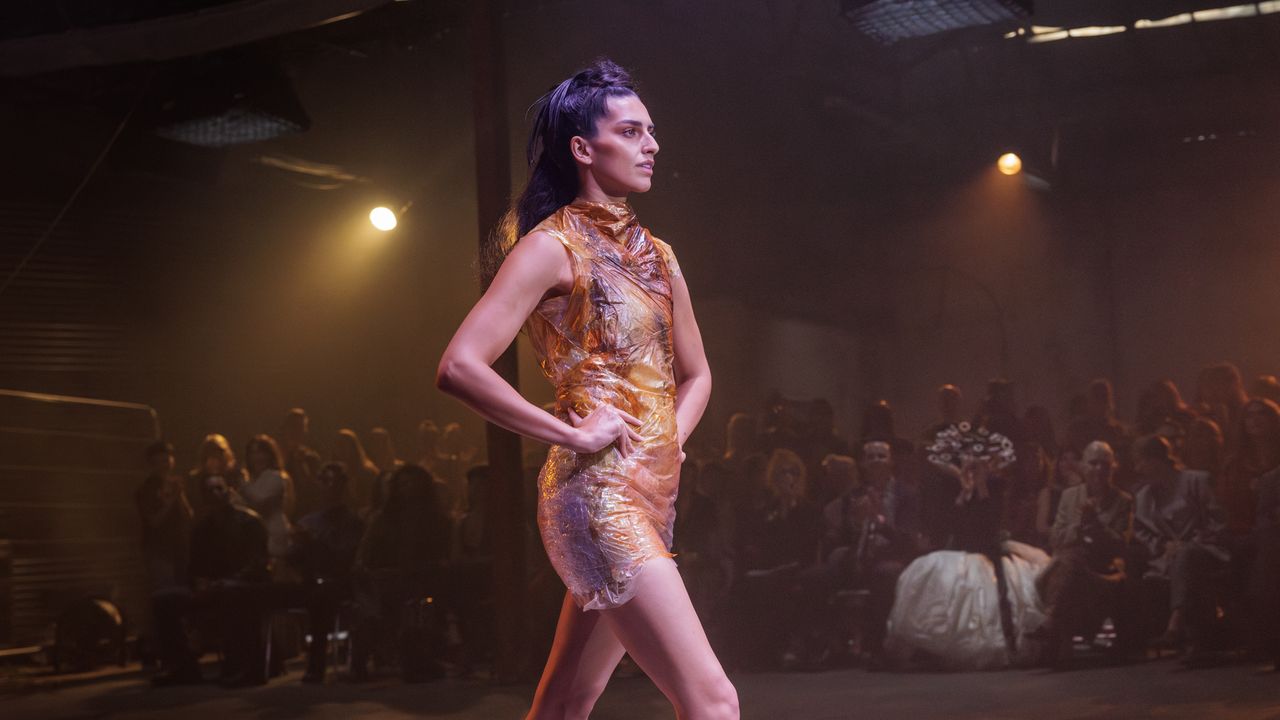MILAN — An emblem of the Roaring ’20s, Art Deco remains one of the most revolutionary design movements of all time.
Distinguished for its engine-inspired motifs like zigzag and sunrays and use of steel and aluminum, Art Deco was embraced globally after its debut at the 1925 Exposition Internationale des Arts Décoratifs et Industriels Modernes, or International Exhibition of Modern Decorative and Industrial Arts, in Paris. In the U.S. the modernist style was celebrated well into the ’40s and inspired iconic New York City landmarks like the Waldorf Astoria and the Chrysler and Empire State Buildings.
Monday marks 100 years to the day since the Art Deco made its debut onto the global scene. Explore WWD’s list of celebratory events:
Ruhlmann Decorator
Musée des Arts Décoratifs, Paris

Ruhlmann Pavilion by Jacques-Émile Ruhlmann at the 1925 Exposition Internationale des Arts Décoratifs et Industriels Modernes
Courtesy of the Musée des Arts Décoratifs
Visionary Jacques-Émile Ruhlmann pioneered the pavilion at the 1925 Exposition Internationale des Arts Décoratifs et Industriels Modernes, which gave birth to the term Art Deco. His ability to elevate neo-classical into modern proportions and his detailed work in the homes of the upper eschelons of Parisian society, epitomize what we know today as Art Deco. Paris’ Musée des Arts Décoratifs offers a rare glimpse into Ruhlmann’s work as a decorator. More than a century later, the public is privy to a rare glimpse of his artistic vision through the 26 sketchbooks his widow left to the institution in 1959 and projects with Desfossé & Karth and the French Wallpaper Society. A few rare models designed by Ruhlmann for these two workshops and more will be on display until June 1.
Musée des Arts Décoratifs
107, rue de Rivoli
https://madparis.fr
Art Deco, Triumph della Modernita’ (A Triumph of Modernity)
Palazzo Reale, Milan

Gio Ponti
Courtesy of Gio Ponti Archives
Art Deco arrived later to Italy, but the movement had a massive impact on the decorative arts and the design industry of which Italy is currently the backbone. The Art Deco exhibition at Palazzo Reale in Milan is showcasing a vast array of objects and images that illustrate the prowess of Italian and European decorative arts of that era. Curated by Valerio Terraroli, the display includes glassworks, porcelain and majolica, textiles, furniture, jewelry, as well as fine art pieces such as paintings, sculptures, drawings, and advertising posters. The exhibit highlights the contributions of Italian icons like Gio Ponti, particularly during his tenure as art director for Richard-Ginori (known today as Ginori 1735). It also brings to the fore creations by glass artist Vittorio Zecchin, master cabinetmaker Ettore Zaccari and goldsmith Alfredo Ravasco.
Art Deco at Palazzo Reale will be on display until June 29.
Piazza del Duomo, 12
https://www.palazzorealemilano.it
Exploring New York City’s Downtown Deco Treasures

A look inside the historic Red Room inside Printemps Paris’s first store in New York City, opening on Wall Street.
George Chinsee/WWD
The Art Deco Society of New York City has planned a series of tours that uncover the Art Deco renaissance that flourished in the U.S. after the Paris’ International Exhibition of Modern Decorative and Industrial Arts. Among them: American Radiator, Chrysler, Chanin, Daily News buildings, as well as Radio City Music Hall and Rockefeller Center.
Led by architectural historian Anthony W. Robins, a tour on Monday will explore Lower Manhattan’s Deco towers that have long made the fabled skyline a symbol of the world’s first modern metropolis. Among them, One Wall Street, a Deco masterpiece which houses Hildreth Meière’s recently restored and reimagined “Red Room” which was once the banking hall of the Irving Trust and Bank Company and is now part of Printemps Paris’ first New York City location.
artdeco.org
Art Deco and Fashion
Mitsubishi Ichigokan Museum, Tokyo

A Poiret illustration by Georges Lepape.
Courtesy Photo
Art Deco had a powerful impact on fashion and coincided with female suffrage around the world, particularly the U.K. and the U.S. after World War I.
Capturing the essence of female emancipation through fashion is Toyko’s Mitsubishi Ichigokan, a museum designed in 1894 by the English architect Josiah Conder at the invitation of the Japanese government not long after the country had ended a long period of national seclusion.
The exhibit highlights how the decorative arts directly shaped lifestyle design and “mode,” or fashionable clothing of the time. Shortly after its dawn, dresses produced by Paris’ leading fashion houses, such as Poiret, Chanel and Lanvin, were envisaged with the same geometric, linear designs and intricate decorations that were characteristic of the revolutionary movement. “It was a new, contemporary style that was popular among active, free-spirited women who were free from old conventions,” the museum said. The exhibit runs until Jan. 26.
Mitsubishi Ichigokan Museum
2 Chome-6-2 Marunouchi, Chiyoda City, Tokyo 100-0005, Japan
#Global #Exhibits #Celebrating #Iconic #Style






